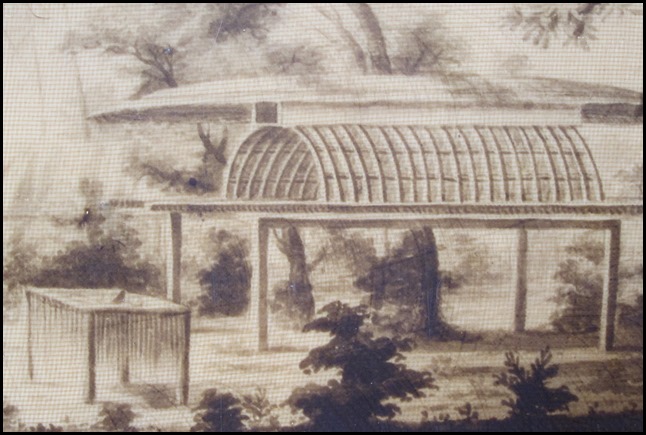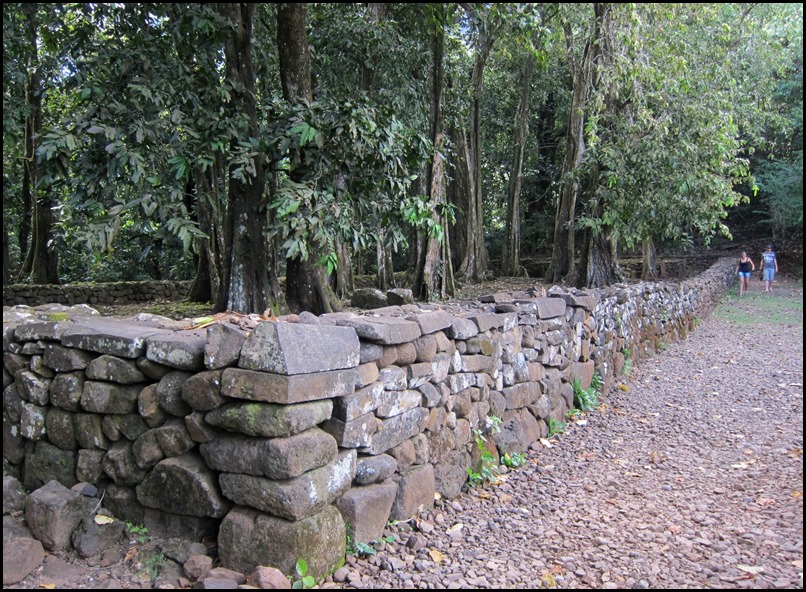Marae Titiroa

|
Marae Titiroa  On our drive around Moorea we stopped at
this sacred site to have a bimble. In the Polynesian world, everything was
centred on religion, politics, social organisation, family life, daily
activities and major events. The marae was not only a place of worship
where the locals honoured their gods and ancestors, it also expressed property
rights, social rank and family organisation. New maraes had to be built around a
stone coming from an old one.
The Europeans, when they arrived, saw many
maraes from family ones to cooperative, public, district and some national.In a
civilisation without the written word, the religious treasure of the ancients
were passed down through the centuries by the priests, gifted with good
memories.
 The study of these remains, their siting
and distribution made it possible for R.C. Green to establish that this valley
has been populated in a continuous manner for at least six hundred years. The
oldest village – Opunoho – dates back to the thirteenth century where
excavations have lifted shells, fish bones and domestic artifacts. At the end of
his second voyage, Captain Cook’s departure was marked by a surprising scene, in
Tahiti, a flotilla of more than two hundred war canoes, carrying an army of some
ten thousand men, were in the midst of preparing to launch an attack on Moorea.
Cook estimated at the time, that the population of Tahiti numbered around two
hundred thousand, however, this impressive flotilla was not victorious. Oral
tradition has passed down stories of many wars rocking Moorea, as well as many
marvelous legends.
1. Area reserved for the gods and the spirits of the ancestors. 2. Upright stones, probably meant to be repositories for the gods, or symbols of the genealogical organisation. 3. Stylised woodcarvings symbolising birds as messengers of the gods. 4. Altar for large offerings such as pigs, dogs, fish etc. 5. Altars for smaller offerings such as vegetables, fruits and other smaller foods. 6. Sacred drums. 7. Paddle. 8. Ceremonial Pole. 9. Backrest Stones. Each one denoted the place of an important person during the ceremonies. 10. Court of the marae. 11. Large shelter for the sacred outrigger canoe. 12. Sacred ark containing the materials of worship. 13. House for the priests and guardians of the marae. While being raised, a human victim was sometimes offered in sacrifice. 14. Bier for the dead. After being eviscerated and covered with oil, the corpse was exposed for several months and remained sheltered until completely withered.  Priest in mourning
attire and bier for the departed. At the death
of a chief, his oiled body was exposed under shelter. During the funeral ritual
the priest wore an impressive costume featuring feathers and mother-of-pearl and
held a shark tooth armed weapon.
 This mobile ark
carried items of worship. To’o, in basket material represented the gods to whom
this marae was consecrated – Ta’aroa, the creator, Tane, the demi-god and Oro,
the god of war.
 Vegetables, fruits, sometimes pigs and
dogs were placed on the elevated altars. Human sacrifice (men only) were killed
before a ceremony only for the greatest functions held on the marae ari’l
dedicated to Oro. This is the first time we have seen a reference to human sacrifice since we arrived in French
Polynesia.
 We wandered the rest of
this well kept site.
 

 
  As it would have looked and today..........
 ALL IN ALL AN INTERESTING
STOP |
